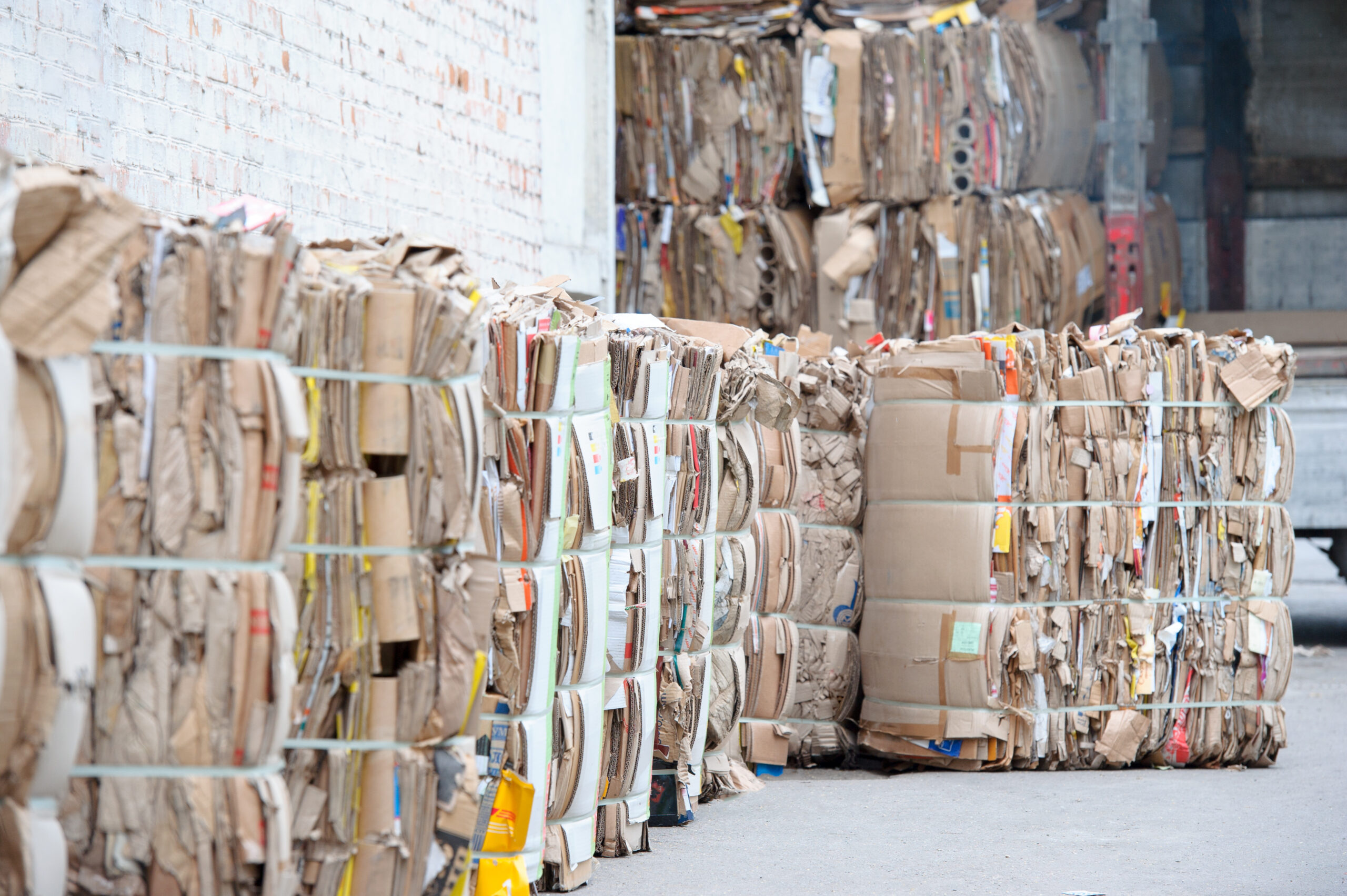4 things to consider to make your packaging easy to recycle

Did you know that Recycle Week takes place every September in the UK? This year, it’s taking place between 19 – 25th September. The theme for 2022 is “Lets get real” and it’s all about challenging perceptions and myths around recycling. This upcoming Recycle Week also aims to target contamination, to improve recycling behaviours.
UK household recycling rates are declining. The Government reports that in 2020 44% of household waste was recycled – down from 46% in 2019. This does not seem like a big drop, but we’re actually now recycling less waste compared to 2015 (44.5%)! Not great for the environment.
So, why are we recycling less? Well, it can be challenging for people to know what packaging they can recycle, where to recycle it and what they need to do to help ensure the packaging and waste they dispose of is recycled…

The challenges of recycling packaging
There are several reasons that we’re recycling less. Let’s take a look at them:
Understanding what packaging can and can’t be recycled
One of the biggest challenges people face is understanding what packaging can and can’t be recycled. Most people know you can recycle paper and cardboard boxes, but what about bags, food packets, padded envelopes and even take away packaging?
End-users of packaging materials often depend on clear labelling to see what they can recycle at home. If the packaging doesn’t have an appropriate label, they might put it in to the wrong bin, which isn’t ideal.
On top of this, some people may not know that you need to remove materials like plastic packing tape and staples from packaging before recycling. There’s also the fact that packaging materials contaminated with food or grease cannot be recycled either. So, the box from the pizza you ate at the weekend? It needs to go in the general waste bin – unless of course you have time to tear out the greasy bits and recycle the unaffected parts!
Knowing where to recycle packaging and the impact of your postcode
There are over 300 different councils and local authorities in the UK. As waste management isn’t streamlined in Great Britain, the recycling rules differ depending on where you live.
What packaging materials are accepted in kerbside recycling collections can differ, as can the materials collected at recycling points. These factors compound the challenges of knowing what packaging to recycle and where to recycle it. This highlights how the packing materials businesses use can be important, as how easy they are to recycle can contribute to improving recycling rates.
If you’re a business shipping parcels outside of the UK, another consideration is recycling rules in other countries. For example, in the UK plastic mailing bags cannot be recycled at home BUT in Ireland they can actually be recycled in household waste collections.
Kerbside vs. industrial recycling
Another challenge in recycling packaging is knowing whether packaging is kerbside or industrially recyclable.
For businesses using packaging to ship to other business, using industrially recyclable packaging is acceptable, as they can make use of commercial waste management collections. For example, products like pallet wrap can be recycled industrially. Industrial recycling or repurposing of packaging materials is most often handled privately, rather than by public sector services. This is perhaps why the commercial recycling rate is slightly higher than the household recycling rate, at 52%.
Contamination problems in recycling streams
A result of many of these challenges is that recycling waste streams can get contaminated. Compostable materials collected in plastic streams, tape on cardboard, food by products on glass and plastic containers – they can all disrupt how easy it is to recycle.
So, on top of people recycling less at home, contamination leads to it being harder for public and private sector recyclers to make use of the packaging materials they collect. This in turn impacts the amount of packaging that has to be diverted to landfill.

Recycling and myth busting
So, what can people recycle? We’re going to take a look at some common recycling myths and bust them…
- You can recycle ALL kinds of paper – this is a myth! Most paper is recyclable, but you need to double check when it comes to wrapping paper and specialist papers like greaseproof or waxed papers. Wrapping paper can often be a culprit for recycling contamination. If it has glitter on it or a metallic coating, it can’t be recycled at kerbside. This is because these finishes are made of plastic, which should not be mixed into the paper waste stream.
- You can recycle corrugated cardboard – this is true! We recycle over 80% of cardboard in the UK. It’s important to remember to remove plastic-based tapes from boxes, when they go into recycling, as they can contaminate the waste stream or gum up recycling machinery!
- The triangle icon made of three arrows mean you can recycle that piece of packaging material – this is a myth! You see the triangle with arrows, you think “great, I can recycle this”. In fact, you might not be able to. This symbol, called a “Morbius Loop”, indicates that an object is capable of being recycled, but not that it will necessarily be accepted by all recycling collection systems. Click there to learn more about recycling symbols.
- You can’t recycle plastic – this is a myth! In fact, most plastic can be recycled, however how and where will depend on the resin the plastic packaging is made from. Recycling plastic can be complex and can be hard to get right, which is why most household collections only accept certain types of plastic packaging. End-users can look out for local supermarket collection points to recycle packaging like carrier bags that are made of soft plastics too.
- You need to wash some packaging to make sure it gets recycled – this is true! Washing packaging, particularly food packaging, before it goes into the recycling bin helps ensure it actually gets recycled.
For more information on recycling common protective packaging materials, click here to read our blog. If you’re looking for more information on how to recycle at home, speak to your local authority or visit the Recycle Now website.

Taking responsibility for packaging waste
Now we’ve considered the challenges and the myths surrounding recycling packaging, what can we do to help recycling across the nation?
Any businesses that manufactures, distributes or uses packaging needs to be responsible when it comes to recycling. Considering the lifecycle of your packaging is important. Ensuring packaging is designed, used, and disposed of properly essential. This all part of lessening the impact packaging will have on the planet.
And while recycling isn’t the only answer to limiting packaging’s impact on the environment, it is an important one. So, how can you help if your business is using packaging? Our packaging experts have put together 4 tips that can help you make your packaging easier to recycle…

What can you do to make your packaging easier to recycle?
- Switch to packaging materials commonly accepted at kerbside or local collection points – if your packaging can be recycled in household collections, it’s more likely to go into a recycling stream. Simple swaps like plastic to paper void fill or plastic to paper packing tape are simple ways to enhance how easy it is to recycle your packaging. Other swaps include paper mailing bags for plastic ones, as well as using paper padded envelopes rather than bubble envelopes.
- Apply clear recycling information to your packaging – this seems like a no brainer, but you’d be surprised how often the right recycling information isn’t on the packaging people get. In our 2021 unboxing survey, 14% of respondents said they weren’t sure if they could recycle the packaging they received due to poor or non-existent labelling.
- Collect & reuse or recycle packaging yourselves – swapping to long-term reusable packaging is one way to remove packaging waste from the environment. However, this might not work for your product or supply chain. But you could investigate collecting and recycling packaging from your customers! This idea has potential if you’re a business-to-business company and visit customer sites regularly. It also works for consumer brands where packaging is used within internal supply chains. A good example of this would be when fashion brands collect and reuse or recycle garment bags from their retail stores.
- Help educate your customers – raising the profile of what can and can’t be recycled is important. The more end users know about the packaging they receive, the better they can recycle it. As well as applying clear recycling labels to your packaging materials, you could include QR codes to educate customers. These can direct of your packaging to information on your website about how and where to recycle it.

Ask us how we can help you reduce your packaging’s impact on the environment
Whatever your sustainability goals, we can help you optimise your packaging and reduce your impact on the environment, with tools like the Packaging Optimiser and eco-friendly packaging products. Contact us today to learn more…

